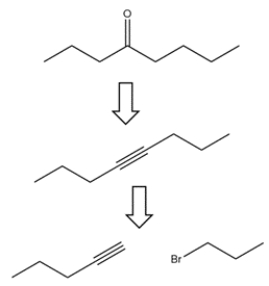Multiple Choice
A free-radical addition of a certain compound X-Y to an alkene (R = alkyl) results in the conversion: The first propagation step in the mechanism is
The first propagation step in the mechanism is Therefore, what is the second propagation step in the mechanism?
Therefore, what is the second propagation step in the mechanism?
A)

B)

C)
D) Both (b) and (c) are propagation steps.
E) Both (a) and (b) are propagation steps.
Correct Answer:

Verified
Correct Answer:
Verified
Q5: Free-radical polymerization of ethylene proceeds with the
Q6: Devise a synthesis to achieve the transformation.<br>
Q7: Give the structure of the organic free-radical
Q8: Give the product A that results when
Q9: 1-Methyl-1-vinyl cyclopentane undergoes addition of HBr under
Q11: Complete the reaction by giving the major
Q12: Provide the structures of the missing compounds.<br>
Q13: Treatment of (+)-(R)-3-methyl-1-pentene with HBr and peroxides
Q14: Complete the reaction by giving the missing
Q15: Provide the major organic product for the